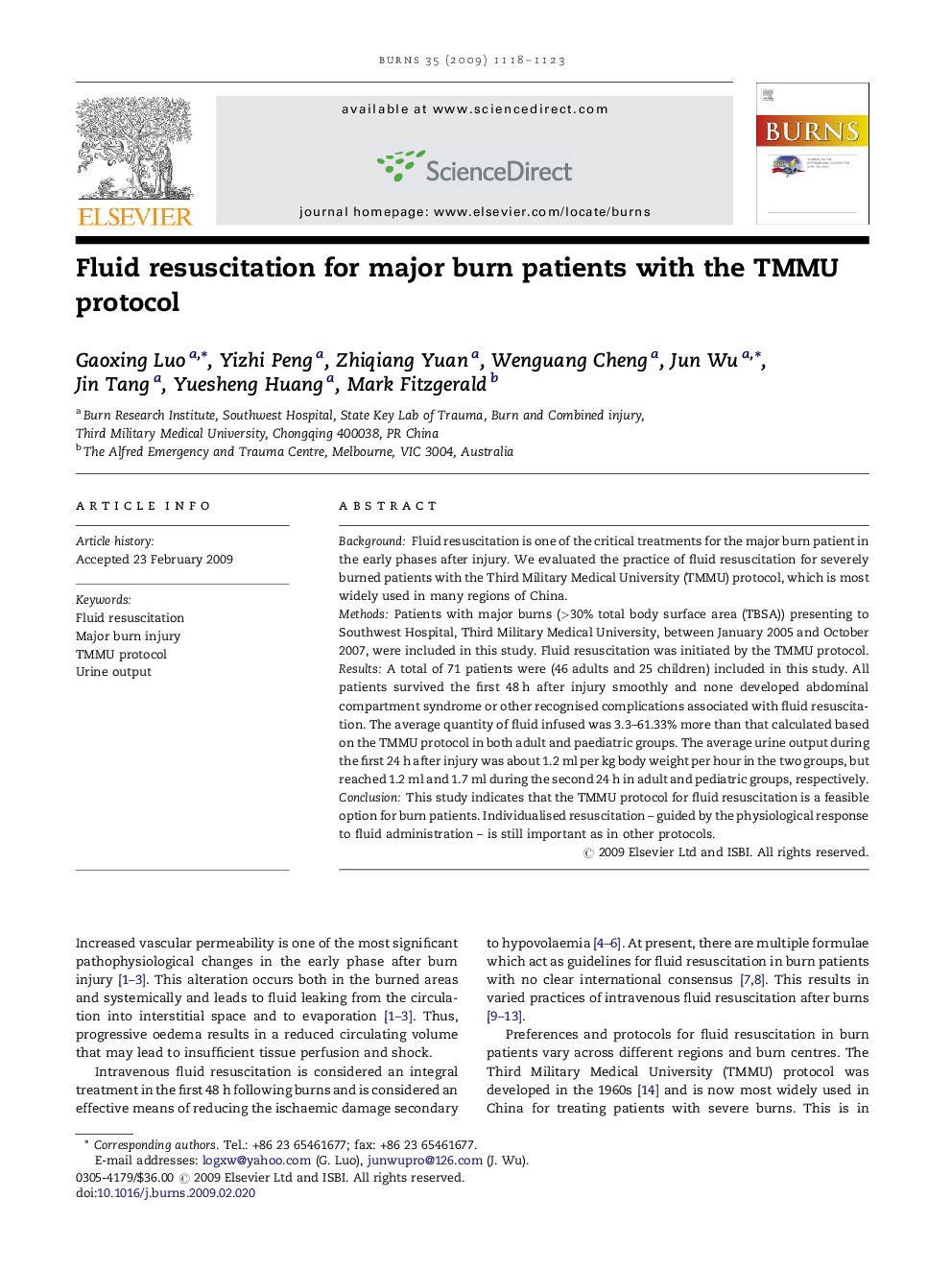| Article ID | Journal | Published Year | Pages | File Type |
|---|---|---|---|---|
| 3105627 | Burns | 2009 | 6 Pages |
BackgroundFluid resuscitation is one of the critical treatments for the major burn patient in the early phases after injury. We evaluated the practice of fluid resuscitation for severely burned patients with the Third Military Medical University (TMMU) protocol, which is most widely used in many regions of China.MethodsPatients with major burns (>30% total body surface area (TBSA)) presenting to Southwest Hospital, Third Military Medical University, between January 2005 and October 2007, were included in this study. Fluid resuscitation was initiated by the TMMU protocol.ResultsA total of 71 patients were (46 adults and 25 children) included in this study. All patients survived the first 48 h after injury smoothly and none developed abdominal compartment syndrome or other recognised complications associated with fluid resuscitation. The average quantity of fluid infused was 3.3–61.33% more than that calculated based on the TMMU protocol in both adult and paediatric groups. The average urine output during the first 24 h after injury was about 1.2 ml per kg body weight per hour in the two groups, but reached 1.2 ml and 1.7 ml during the second 24 h in adult and pediatric groups, respectively.ConclusionThis study indicates that the TMMU protocol for fluid resuscitation is a feasible option for burn patients. Individualised resuscitation – guided by the physiological response to fluid administration – is still important as in other protocols.
